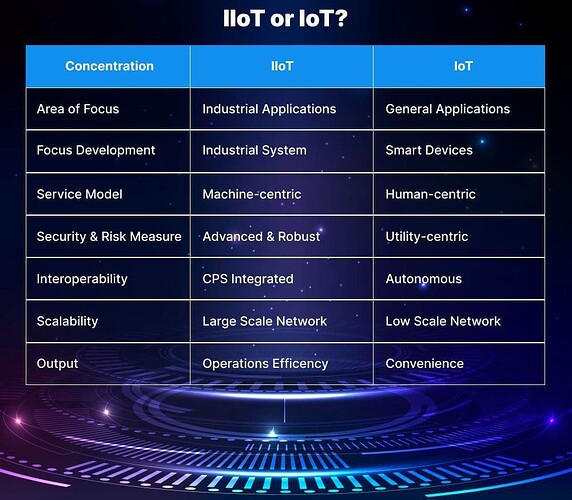IoT (Internet of Things) and IIoT (Industrial Internet of Things) are both connected systems of physical devices, sensors, and software that collect, analyze, and transmit data. However, there are several key differences between the two:
-
Purpose: IoT is focused on consumer and home automation, while IIoT is focused on industrial applications.
-
Connectivity: IoT devices are typically connected to the internet through Wi-Fi or cellular networks, while IIoT devices are often connected through wired networks such as Ethernet or industrial protocols like Modbus or Profibus.
-
Data Processing: IoT devices typically transmit data to the cloud for processing and analysis, while IIoT devices may process data locally on the device or on an on-premises server to minimize latency and ensure real-time operation.
-
Security: IoT devices may have limited security features, making them more vulnerable to hacking and cyberattacks, while IIoT devices have more advanced security features due to the sensitive nature of industrial data.
-
Scale: IoT devices are typically used on a smaller scale, such as in homes or small businesses, while IIoT is used on a larger scale in industrial environments such as factories, refineries, and power plants.
-
Standards: IoT devices may use different communication protocols and standards depending on the manufacturer, while IIoT devices often adhere to established industrial standards such as OPC-UA or MQTT.
-
Real-time Operations: IIoT systems are designed to enable real-time operations, whereas IoT systems can often tolerate some delay or lag in data processing and transmission.
Overall, IIoT is a more specialized and complex application of IoT technology that is tailored to the unique needs of industrial environments, including high reliability, safety, and security.
Credits: ![]()
